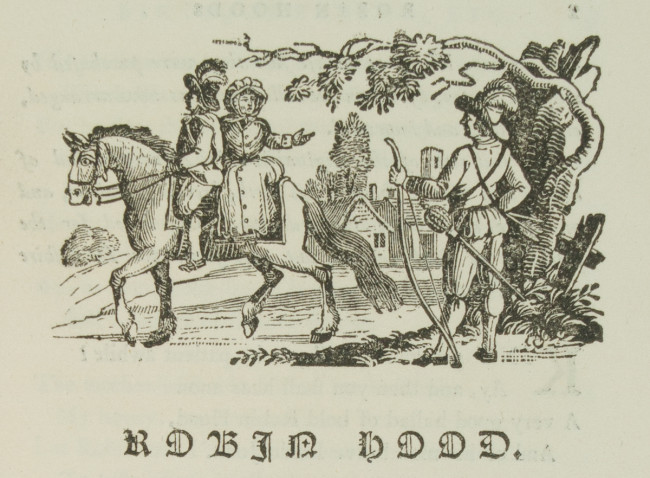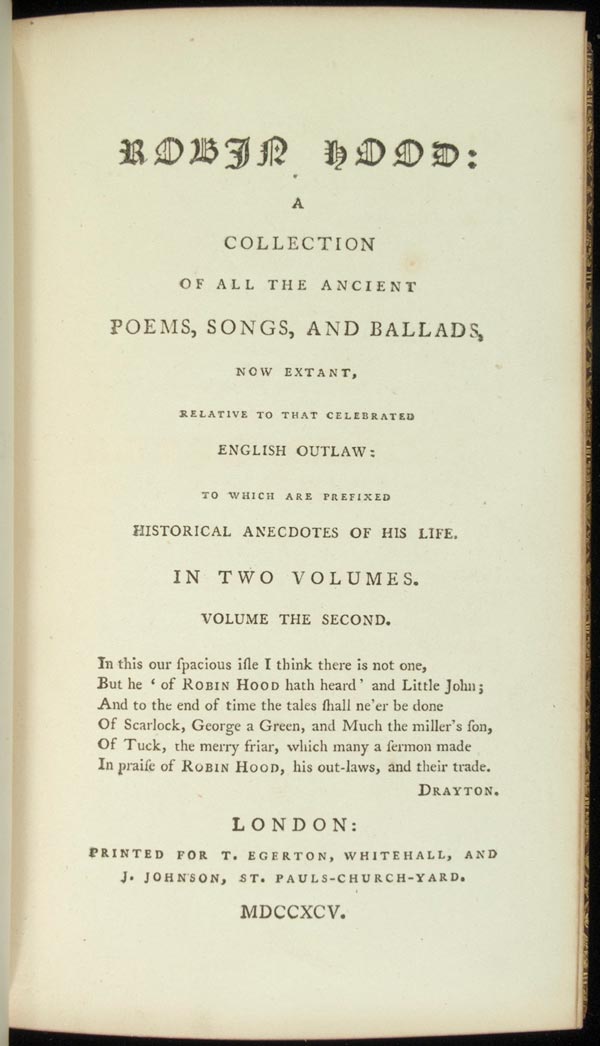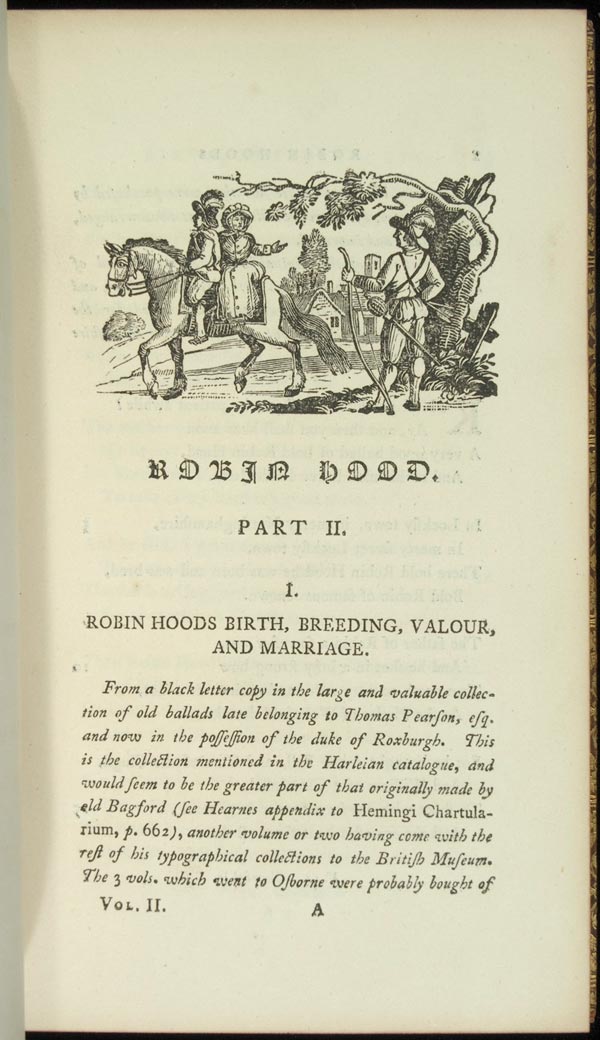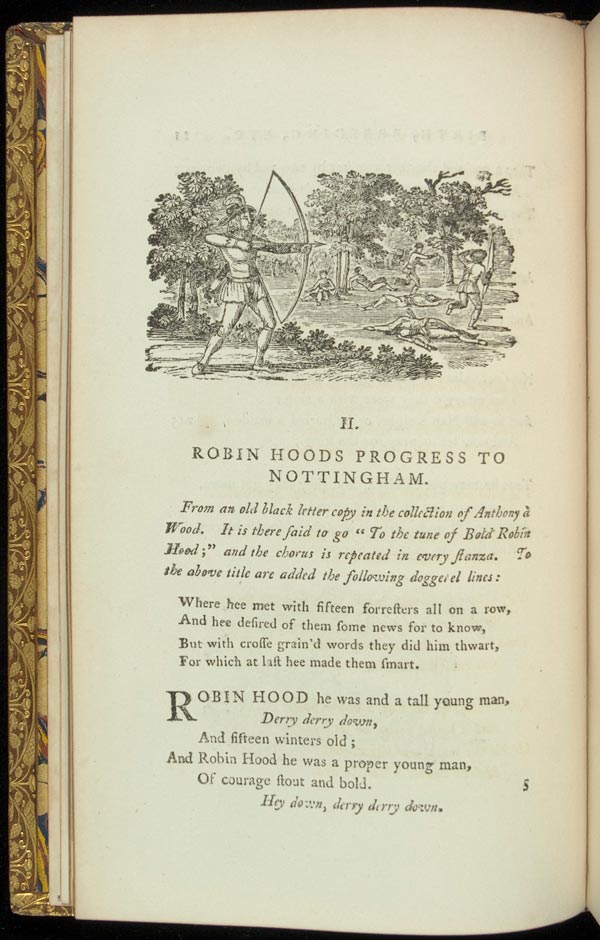
[Ritson, Joseph.] Robin Hood: A Collection of All the Ancient Poems, Songs, and Ballads, now Extant, Relative to that Celebrated English Outlaw: to which are prefixed Historical Anecdotes of His Life. In Two Volumes. Illus. by John and Thomas Bewick. London: Printed for T. Egerton, Whitehall, and J. Johnson, Saint-Pauls-Churchyard, 1795. (From the Collection of Thomas Hahn)
The antiquarian Joseph Ritson (1753-1803) published Robin Hood: A Collection of all the ancient Poems, Songs, and Ballads, now extant, relative to that celebrated English Outlaw: To which are prefixed Historical Anecdotes of His Life in two lavishly illustrated and annotated volumes in 1795. Under Ritson's hand, Robin Hood transitioned from historical oddity to a worthy object of scholastic inquiry. Ritson's 12-page "The Life of Robin Hood," which prefaced the collection of ballads, is the first academic discussion of the Robin Hood tradition. The "Life" is supported by 117 pages of scholarly apparatus, modestly titled "Notes and Illustrations," and has rarely been removed from the collection upon re-printing. Illustrated by the famous engraver Thomas Bewick (1753-1828), Ritson's Robin Hood sought to systematically gather the scattered materials of the tradition into a single source to be enjoyed by intellectuals and casual readers alike. Though Ritson's scholarship is seriously flawed and his methodology has been heavily criticized, the significance of his work is undeniable: Ritson's Robin Hood has been continuously reprinted for more than two centuries and remains a significant resource for students of the tradition.
Two first editions of Robin Hood: A Collection of all the ancient Poems, Songs, and Ballads, now extant, relative to that celebrated English Outlaw: To which are prefixed Historical Anecdotes of His Life are on display in the Department of Rare Books and Special Collections, along with a selection of nineteenth-century reprints of the 1795 original. Many of the reprints retain Ritson's essay "The Life of Robin Hood," and though Bewick's engravings have often been replaced, or simply eliminated all together, the Ritson Robin Hood continues to stand as a watershed moment in Robin Hood scholarship.
This blog post was contributed by Valerie Johnson, UR PhD Candidate, in 2009.




